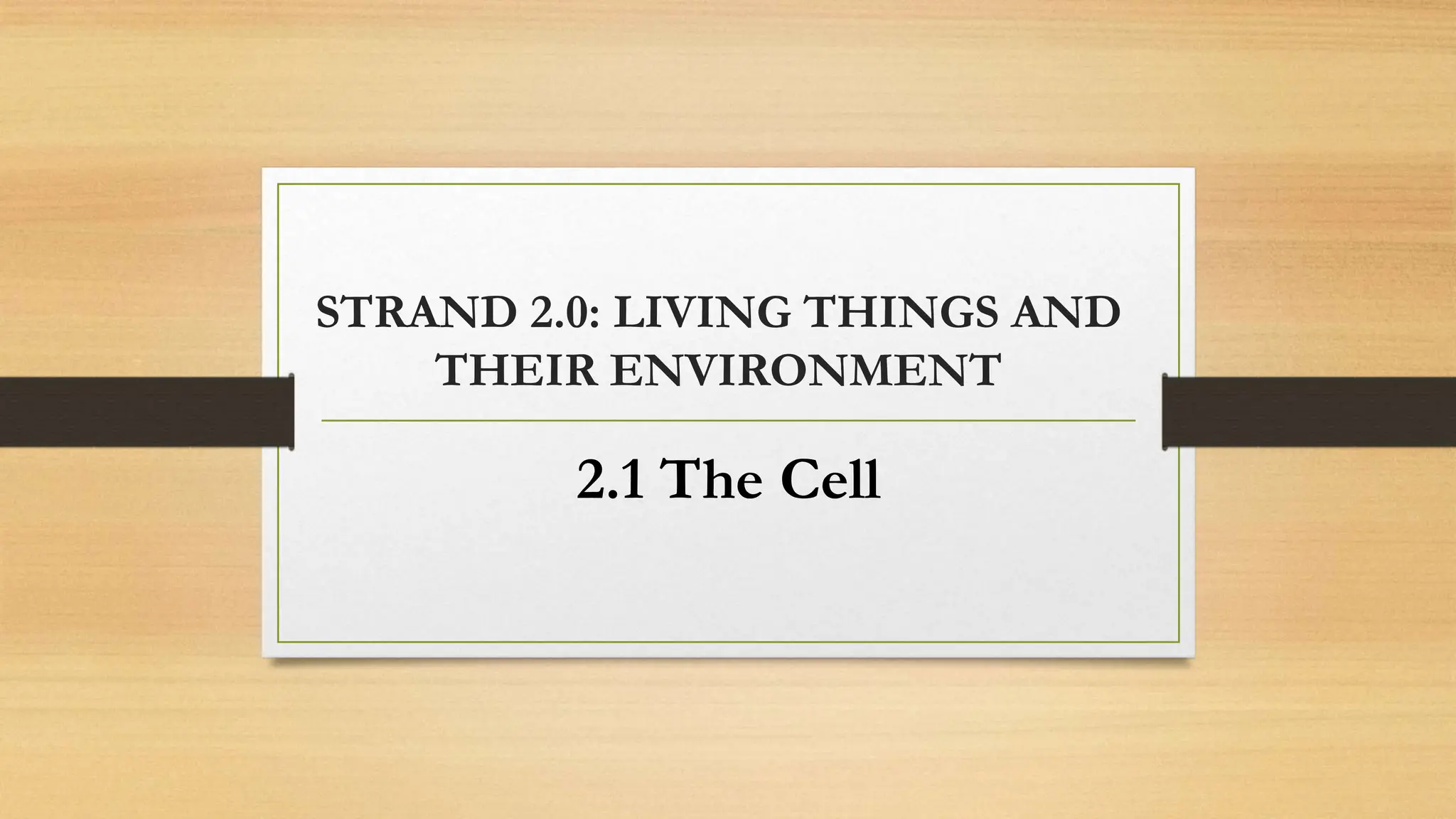The document outlines the structure and functions of plant and animal cells as observed under a light microscope. It provides details on the key components of cells, including organelles like the nucleus, cytoplasm, cell membrane, and chloroplasts in plant cells. Experiments are described to demonstrate how heat, acids and alkalis can affect the cell membrane by disrupting its structure and increasing permeability. The importance of diffusion and osmosis in transporting nutrients, gases and waste in living things is also highlighted.





































